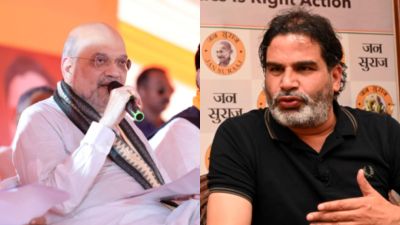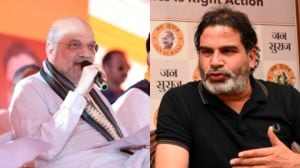A pain in the neck that is surfacing in the young
NEW DELHI, April 19: Bad roads do not just damage shock absorbers in cars. The ones which come fitted in the human spine, known as discs, ar...

NEW DELHI, April 19: Bad roads do not just damage shock absorbers in cars. The ones which come fitted in the human spine, known as discs, are also affected. If the growing number of patients approaching the Capital’s orthopaedists is any indication, typical urban factors like bad roads, a sedentary lifestyle, long hours of work and bad posture are leading to a rise in incidence of back problems like spondylosis. Though essentially a degenerative disorder usually associated with old age, spondylosis (wrongly called spondylitis) has now begun attacking younger people.
Take the case of a 23-year-old woman, a stenographer with an MNC, who landed up at the clinic of an orthopaedic surgeon at Indraprastha Apollo hospital, complaining of a persistent pain in her neck. She was diagnosed as having cervical spondylosis as a result of unremitting stress on the upper part of her spine.
A nagging backache, after it began seriously affecting the routine of a 34-year-old businessman, also turned out to be spondylosis of the lumbar region.
According to doctors, in these cases, regular bumpy rides on bad stretches of road were as much to blame as other forms of spinal stress like bad posture and obesity. At the Lok Nayak Hospital, which has one of the city’s busiest orthopaedic departments, of the 30 to 40 cases of spondylosis that land up every day, at least 25 per cent constitute those under 40 years of age.
Dr Yash Gulati, an orthopaedic surgeon practicing in south Delhi, claims that five of every 15 cases of spondylosis that he sees every week are usually among the under-40 age group mostly executives. According to him, travelling in badly maintained public transport like rickety autorickshaws, that too on potholed roads, puts strain on the back, particularly on the lower back. The problem manifests after repeated stress over a long period of time.
Dr B K Dhaon, dean of the Maulana Azad Medical College and the head of its orthopaedics department, says: “In our OPDs at the Lok Nayak Hospital, cervical spondylosis (of the rear neck region) is most commonly seen amongst people who spend long hours in front of computers or typewriters. Stress and tension precipitate the condition,” he says.
Dr Raju Vaishya, an orthopaedic surgeon with Apollo, too claims that 25 to 27 per cent of the 105-odd patients he sees every month have spondylosis of the cervical and lumbar region, with a majority of patients being between the age group of 30 to 40 years.
“Wear and tear of the discs, the soft-tissue pads between two vertebrae of the spinal cord, which act as shock absorbers, actually reduces their efficiency. This manifests in chronic pain in the affected part which, if neglected, can turn into debilitating spondylosis.”
Natural at old age, the process is apparently being hastened among a section of population, owing to certain lifestyle factors.
“Obesity and repeated pregnancies are just some of the other factors,” Dr Vaishya says. The doctors are blaming abnormal stresses on the neck (and sometimes back) for the condition, which reduces the shock absorbing capacity of the disc.
In the US, the `Repetitive Stress Injury (RSI), which includes mild forms of spondylosis as it affects the neck or the lumbar region too, has actually become a contentious issue between employees and their employers.A large number of clerks and computer operators have gone to the extent of suing their employers for their RSI-related health problems and have even managed to win hefty compensations, compelling the employers to provide a healthy work environment.
But in India, lack of awareness about the problem and its causes is forcing a large number of people to suffer in silence.
“The term `spondylosis’ is, however, loosely being used both by patients and general practitioners for practically all cases of neck (and sometimes back) pain. Every such case can by no means be labelled as spondylosis, till other causative factors such as bone infection, injury, tumour, calcium or Vitamin-D deficiency or plain stress are ruled out,” says Dr Vaishya.
Any pain in the neck or back that persists for more than two weeks could turn out to be spondylosis, he cautions, adding that once the presence of this disorder is established by an expert, a combination of physiotherapy and pain killers can usually treat it.
Surgery may be needed in cases when the problem becomes severe or results in the rupturing of the disc, leading to neurological problems.





- 01
- 02
- 03
- 04
- 05


























